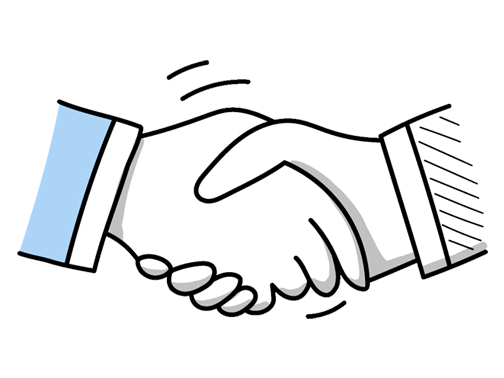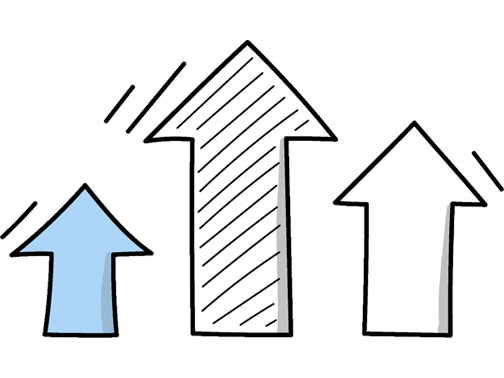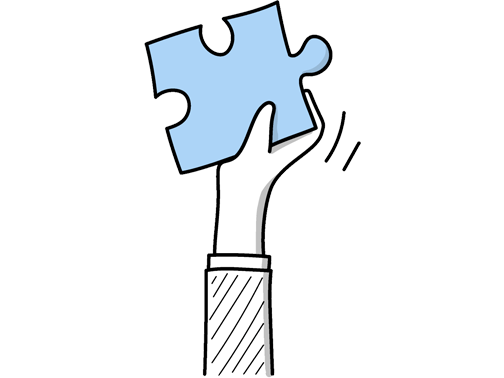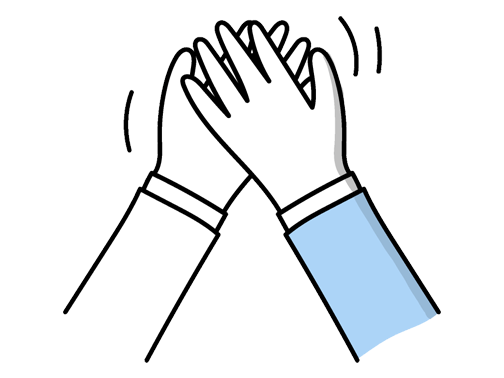Steel Fixer Interview Questions (2025 Guide)
Find out common Steel Fixer questions, how to answer, and tips for your next job interview
Practice Interviews Online - Identify your strengths and weakness in a realistic Steel Fixer mock interview, under 10 minutes
Practice Now »Steel Fixer Interview Questions
This interview question is designed to assess your communication and problem-solving skills in a team setting. You need to explain the conflict clearly, describe how you listened and stayed calm, and show how you worked together to find a solution.
Example: Once, a coworker and I disagreed on the way to secure rebar, which was slowing progress. I suggested we take a moment to review the plans together and listen to each other’s concerns. By working through it calmly, we found a better method that was both safe and efficient. It improved not only the task but also our teamwork moving forward.
What they want to understand is how you handle challenges and apply your skills practically to improve a project. You need to clearly describe a specific problem you faced, the solution you implemented, and the positive result it had on the project’s success.
Example: On a previous project, we faced delays because some steel deliveries were late. I suggested rearranging our schedule to focus on areas not affected, keeping progress steady. This approach helped avoid downtime and kept the team motivated. Eventually, when the materials arrived, we smoothly integrated the work without losing time, which kept the project on track and under budget.
Questions like this assess your problem-solving skills and how you approach issues on site to prevent delays or safety risks. You need to say that you carefully analyze the situation, consult with your team, and take corrective actions while ensuring the problem is fully resolved.
Example: When I come across a problem, I first take a moment to really understand what’s going on by looking at the whole situation. Then, I talk things over with the team or my supervisor to get their perspective and pinpoint what might be causing the issue. Once we have a good idea, I try out the fix and check that it solves the problem, like when a misaligned bar needed adjusting to keep the project on track.
Questions like this assess your ability to work well within a team, which is crucial for safety and efficiency on a construction site. You should say that you communicate clearly to explain tasks, listen actively to others, and cooperate by alerting teammates to hazards and supporting their ideas.
Example: On site, I make sure to keep my instructions straightforward and easy to understand, which helps avoid any confusion. I always listen carefully when others share their thoughts or concerns, as this keeps the work flowing smoothly and safely. For example, when coordinating rebar placement, I check in regularly to ensure everyone’s clear on their tasks and any changes on the go. That way, the whole team stays on the same page.
Interviewers ask this question to see how you handle pressure and make quick decisions that keep the project safe and on schedule. You should explain how you assess which tasks impact safety or deadlines most, plan a clear order to tackle them, and communicate with your team to stay coordinated.
Example: When several urgent tasks come up on site, I quickly size up which ones affect safety or the project’s progress most. I stay organized by breaking down jobs and setting a clear order, making sure the team knows what to focus on. If needed, I communicate immediately with colleagues to delegate or get support, so everything keeps moving smoothly without delays or confusion.
Hiring managers ask this to see if you understand the precision and safety involved in shaping rebar to specifications. You need to explain that you carefully measure, mark, cut, and bend the rebar using proper tools while following project plans and safety guidelines.
Example: Sure. When bending rebar, I first measure and mark the exact points to ensure accuracy. Using a bending tool or a hydraulic bender, I carefully shape the bar without causing cracks. For cutting, I select the right saw or cutter, then make clean cuts following the marked lines. It’s important to stay precise and maintain safety throughout, especially on site where conditions can change quickly.
What they want to know is how you handle tough situations and work with others to solve problems on the job. You need to briefly describe a specific challenge, explain how you used teamwork and communication to fix it, and share a positive result or lesson learned.
Example: On one project, we faced tight deadlines with complex steel layouts that risked delays. I coordinated closely with the team, double-checking plans and adjusting workflows to stay on track. By staying organised and communicating clearly, we completed the job on time without cutting corners. It taught me how vital teamwork and flexibility are when unexpected challenges arise on site.
What they want to know is how you stay connected and coordinated with your team to keep the project on track. You need to say that you communicate regularly with colleagues, prioritize your tasks to meet deadlines, and proactively address any problems by consulting with supervisors.
Example: To make sure my work fits the project’s goals, I keep in close contact with the team to stay updated on any changes. I plan my tasks carefully to meet deadlines and maintain quality. When unexpected issues come up, I look for practical solutions that won’t hold the project back. For example, if a design shifts, I quickly adjust my approach and communicate those changes so everyone stays on the same page.
Employers want to see that you can solve problems efficiently and adapt to unexpected issues on site. You need to share a specific example where you used creative thinking to address a challenge, explaining the problem, your unique solution, and the positive outcome.
Example: On a recent project, we faced tight spaces where standard rebar cages wouldn’t fit. I suggested prefabricating smaller sections off-site and assembling them on-site instead. This approach saved time and reduced errors, while keeping everything secure. It was a practical way to adapt without compromising quality, showing how a bit of flexibility and teamwork can solve unexpected issues.
This question assesses your problem-solving skills and how you stay calm and effective under pressure. You need to explain that you first assess the situation carefully, consider safety and project requirements, then consult with your team or supervisor before deciding on the best solution.
Example: When I run into an unexpected problem on site, I stay calm and assess the situation carefully. I think about what might have caused the issue and check if it affects safety or structure. Then, I discuss possible solutions with the team or supervisor before acting. For example, if rebar placement isn’t matching the plans, I double-check measurements and consult drawings to fix it correctly without causing delays.
This question checks if you understand both the practical steps and safety concerns of tying rebar correctly. You need to clearly explain how you position the rebar, use tools like pliers or tying tools, and ensure tight, secure ties to maintain structure quality and safety.
Example: Tying rebar starts by placing the steel bars according to the layout, then securing intersections using wire to hold them firmly in place. I typically use a pair of pliers or a rebar tying tool to twist the wire tightly. Throughout, I make sure the ties are snug but not overly tight to maintain structural integrity. Safety gear like gloves and eye protection is a must, ensuring both quality and personal safety on site.
Employers ask this question to ensure you can accurately understand and apply technical information critical for precise steel fixing. You need to explain how you identify symbols and measurements on blueprints, translate them into on-site tasks like placing rebar correctly, and carefully notice any updates or changes in the drawings.
Example: When I look at construction drawings, I focus closely on the symbols and notes to make sure I understand exactly what’s required. I then relate those details directly to the work on site, like positioning steel bars where the plans indicate. If there are any updates or changes in the drawings, I double-check everything to avoid mistakes and keep the project running smoothly. For example, spotting a revision in the rebar layout early saves time and effort later on.
Employers ask this to understand your experience and the range of projects you’re familiar with. You need to mention specific types of construction projects you’ve worked on, like residential, commercial, or infrastructure, to show your relevant skills and adaptability.
Example: I’ve worked on a variety of projects, from residential buildings to commercial developments. For example, I was involved in reinforcing foundations for apartment blocks and setting up steel frameworks for office buildings. I’ve also contributed to infrastructure projects like bridges, which required careful attention to detail and strong teamwork. These experiences have given me a solid understanding of different site requirements and safety standards.
Questions like this assess your leadership and communication skills, showing how well you can coordinate a team and maintain safety and quality. You need to explain how you delegated tasks based on skills, trained others through practical demonstrations, and ensured standards by conducting regular inspections.
Example: Yes, I’ve guided new Steel Fixers by breaking down tasks clearly and showing them the best techniques on site. I focus on hands-on training, making sure they understand safety rules and quality expectations. For example, when we were working on a bridge project, I regularly checked their work and offered tips to keep standards high while meeting deadlines.
Interviewers ask this question to see if you understand how to accurately follow blueprints and maintain structural integrity by correctly placing rebar. You need to explain how you read engineering drawings, use tools like tape measures and spacers to check spacing, and quickly fix or report any mistakes you find.
Example: To ensure the rebar is placed correctly, I carefully review the drawings and specs before starting. I use tape measures and spacers to check that the bars are evenly spaced and aligned. If something doesn't match up, I double-check with the site supervisor or engineer and adjust as needed. On one project, catching a small spacing error early saved time and kept everything structurally sound.
Hiring managers ask this question to gauge your level of expertise and suitability for the role. You need to clearly state your total years of experience working as a steel fixer and briefly mention relevant projects or skills gained during that time.
Example: I’ve been working as a Steel Fixer for about five years now. During this time, I’ve handled various projects, from residential buildings to commercial sites, always focusing on accuracy and safety. For example, on a recent job, I coordinated with the team to ensure all steel reinforcements were placed correctly, which helped keep the project on schedule and met quality standards.
This question checks your understanding of materials and their applications on site. You need to say the common types of rebar, like carbon steel and epoxy-coated, and explain when each is used, such as for corrosion resistance or structural strength.
Example: Rebar comes in various types, each suited for different jobs. For example, mild steel rebar is common for most structural work because it's flexible and easy to tie. Deformed bars, with their ridges, provide better grip in concrete, making them ideal for heavy-load areas like foundations. There’s also stainless steel rebar for corrosion resistance, often used in harsh environments like coastal constructions. Choosing the right one depends on the project’s specific demands.
Employers ask this question to ensure you prioritize safety and understand the importance of following protocols to prevent accidents. You need to say that you always follow safety guidelines, wear proper protective equipment, and actively communicate with your team to maintain a safe work environment.
Example: On site, I stay alert to potential hazards and follow all safety protocols closely. I wear the right protective gear and make sure my tools and materials are handled properly. If I notice something unsafe, I speak up or fix it immediately. For example, I once spotted a loose scaffold plank and reported it before work continued, keeping everyone safe without slowing progress.
Hiring managers ask this question to see if you can recognize risks on site and act quickly to keep everyone safe. In your answer, clearly describe the hazard you noticed, the immediate steps you took to address it, and how you helped improve safety procedures afterward.
Example: During a previous job, I noticed loose rebar protruding in a busy walkway. I stopped work immediately and cordoned off the area to prevent accidents. Then, I reported it to the site supervisor and helped secure the bars properly. I always keep safety front and centre to ensure everyone goes home without injury and that site rules are followed consistently.
Employers ask this question to see how well you work with others and contribute to group goals. In your answer, clearly describe the actions you took to support your team, the positive results you helped achieve, and how you communicated effectively to keep everyone informed and safe.
Example: On a recent project, I made sure everyone understood the plans clearly by checking in regularly and sharing updates. When a delivery was delayed, I quickly suggested rearranging tasks so the team stayed on track. This kept the workflow smooth, and we finished on time. Being open and clear with the team helped us avoid confusion and meet our deadline together.
Employers ask this question to see if you can recognize and solve problems that slow down work, showing your initiative and impact on the job site. You need to explain a specific issue you found, the action you took to fix it, and the positive result that improved efficiency.
Example: On a recent project, I noticed delays caused by waiting for materials, so I coordinated closely with the suppliers and schedule to ensure timely deliveries. This reduced downtime significantly. I also suggested reorganising our rebar layout on site, which helped the team work more efficiently and cut down on movement between tasks. As a result, we completed the fixing phase ahead of schedule without compromising quality.
What they want to know is that you prioritize safety to prevent injuries and maintain a secure work environment. You need to say that you always wear proper PPE like gloves, boots, and helmets, check the work area for hazards before starting, and use correct lifting and handling techniques to avoid accidents.
Example: When working with rebar and concrete, I always make sure to wear the right gear like gloves, boots, and eye protection to avoid injuries. I stay alert to any site hazards and communicate regularly with the team to keep the area safe. Handling rebar carefully and using proper tools helps prevent accidents and ensures everything is securely installed, keeping both myself and others protected on site.
This question checks your awareness of safety practices crucial in steel fixing. You need to mention key PPE like hard hats, gloves, safety boots, and eye protection to show you prioritize safety on site.
Example: On site, I always wear a hard hat and high-visibility vest to stay seen and safe around machinery. Steel-toe boots protect my feet from heavy materials, while gloves help handle rebar without injury. When cutting or welding, I use safety goggles or a mask to guard against sparks and dust. Staying cautious with the right gear is crucial for preventing accidents every day.
Hiring managers ask this question to see how well you work with others and keep the job site efficient and safe. You need to say that you communicate clearly, coordinate your tasks with other trades to avoid conflicts, and stay flexible to solve problems and adapt to different working styles.
Example: I make sure to keep communication clear and straightforward, whether it’s through a quick chat or checking plans together. I stay flexible when schedules shift and look for practical ways to fit our work around others. For example, on my last site, I coordinated timing with electricians so we avoided delays, keeping things moving smoothly for everyone involved.
Hiring managers ask this to see if you take safety seriously and keep up with important changes that protect everyone on site. You need to say you regularly check official safety websites, attend workshops, and always apply new guidelines to your daily work to ensure a safe environment.
Example: I make it a point to regularly check updates from the Health and Safety Executive and attend toolbox talks on site. Whenever new procedures come in, I review them carefully and discuss with the team how best to apply them day-to-day. I also take part in any training sessions offered, as staying informed helps keep everyone safe and ensures the job runs smoothly.
Ace your next Steel Fixer interview with even more questions and answers
Common Interview Questions To Expect
The interviewer is looking for your motivation, passion, and understanding of the role. You can answer by discussing your skills, experience, interest in the industry, or alignment with the company's values.
Example: I've always been fascinated by construction and working with my hands, so becoming a steel fixer feels like a natural fit for me. I love the challenge of creating structures that will stand the test of time, and I'm excited to bring my skills and experience to this role. Plus, I admire the company's commitment to quality and safety, which aligns with my own values.
The interviewer is looking for a clear and honest explanation of why you decided to change career paths. Be prepared to discuss your reasons for making the change and how it has positively impacted your career growth.
Example: I decided to change career paths because I wanted to pursue a more hands-on and physically demanding job. As a steel fixer, I enjoy the challenge of working with my hands and seeing the tangible results of my hard work. This career change has allowed me to grow professionally and develop new skills in the construction industry.
Interviewees can answer by acknowledging a mistake, explaining how they rectified it, and highlighting lessons learned. Interviewers are looking for honesty, accountability, problem-solving skills, and ability to learn from mistakes.
Example: Yes, I once made a mistake in measuring the dimensions for a steel beam. I immediately notified my supervisor, and we were able to correct the error before any further work was done. I learned the importance of double-checking measurements and now always make sure to verify my calculations.
The interviewer is looking for insight into your personal drive and passion for the job. You can answer by discussing your career goals, work ethic, passion for the industry, or desire to succeed.
Example: What motivates me is the satisfaction of seeing a project come together and knowing that my hard work contributed to its success. I have a strong work ethic and take pride in my craftsmanship as a steel fixer. My goal is to continue honing my skills and advancing in the industry.
The interviewer is looking for your level of interest in the company and the role, as well as your understanding of the job responsibilities and company culture. You can ask about the team dynamics, company goals, or opportunities for growth.
Example: Yes, I was wondering about the team I would be working with and how we collaborate on projects. Also, could you tell me more about the company's long-term goals and how my role as a Steel Fixer fits into that? Lastly, are there any opportunities for professional development and advancement within the company?
Company Research Tips
The company's official website is a goldmine of information. Look for details about the company's history, mission, vision, and values. Pay special attention to their projects, especially those related to steel fixing. This will give you an idea of the scale and complexity of the projects they handle, the techniques they use, and the standards they adhere to. Also, check their news or blog section for recent updates, achievements, or challenges.
Tip: Don't just skim through the website. Take notes and try to understand the company's culture, work ethics, and expectations. This will help you tailor your responses during the interview.
Social media platforms like LinkedIn, Facebook, and Twitter can provide insights into the company's culture, employee engagement, and recent updates. LinkedIn can give you information about the company's size, location, and employee roles. Facebook and Twitter can provide a glimpse into their public relations and customer service approach. You can also find reviews and ratings from employees and customers on these platforms.
Tip: Look for patterns in reviews and ratings. One or two negative reviews might not represent the company accurately. Also, follow the company's social media pages to stay updated.
Industry news and trade publications can provide information about the company's standing in the industry, their competitors, and the challenges they face. They can also give you an idea about the latest trends and technologies in steel fixing, which can be useful during the interview.
Tip: Use this information to show your knowledge about the industry and to ask insightful questions during the interview.
Networking with current or former employees of the company can provide insider information about the company's work environment, management style, and interview process. You can use platforms like LinkedIn to connect with them. Remember to be respectful and professional in your approach.
Tip: Don't ask for confidential or sensitive information. Instead, focus on getting a general idea about the company and the role you're applying for.
Curveball Questions
How to respond to the silly questions where there's no right answer.
This question is looking for your creativity and ability to think outside the box. Common answers include Abraham Lincoln, Albert Einstein, or Leonardo da Vinci. An answer that provides a unique perspective or lesser-known historical figure will stand out.
Example: I would choose to have dinner with Amelia Earhart because of her pioneering spirit and determination to break barriers in aviation. I admire her courage and resilience in the face of adversity.
This question is assessing your creativity and problem-solving skills. Common answers include flying, super strength, or invisibility. An answer that ties the superpower to a specific skill or trait relevant to the job will stand out.
Example: If I were a superhero, my superpower would be the ability to manipulate metal effortlessly. This would make me an expert Steel Fixer, able to bend and shape steel with precision and speed.
This question is looking for your ability to think critically and consider different perspectives. Common answers include the Renaissance, the Industrial Revolution, or the future. An answer that explains the reasons behind the choice and how it relates to personal values or interests will stand out.
Example: I would choose to live in the Industrial Revolution because of the rapid advancements in technology and innovation. I am fascinated by the impact of industrialization on society and the opportunities it created for growth and development.
This question is assessing your ability to make decisions and prioritize preferences. Common answers include pizza, pasta, or sushi. An answer that explains the reasoning behind the choice and shows self-awareness will stand out.
Example: If I could only eat one food for the rest of my life, I would choose sushi. I appreciate the variety of flavors and textures in sushi, and it provides a balanced and nutritious meal option.
This question is assessing your problem-solving skills and ability to prioritize necessities. Common answers include a knife, a lighter, or a water purifier. An answer that shows creativity and resourcefulness in choosing items that serve multiple purposes will stand out.
Example: If I were stranded on a desert island, I would bring a multipurpose tool like a Swiss Army knife, a solar-powered flashlight, and a waterproof shelter. These items would help me survive and adapt to my environment until rescue arrives.
What to wear to an Steel Fixer interview
- Clean, well-fitting jeans or work trousers
- Comfortable, sturdy shoes or boots
- A neat, casual shirt or polo shirt
- A warm, clean jacket if weather requires
- Minimal jewelry and accessories
- Well-groomed facial hair, if any
- Clean, short fingernails
- No strong perfumes or colognes





